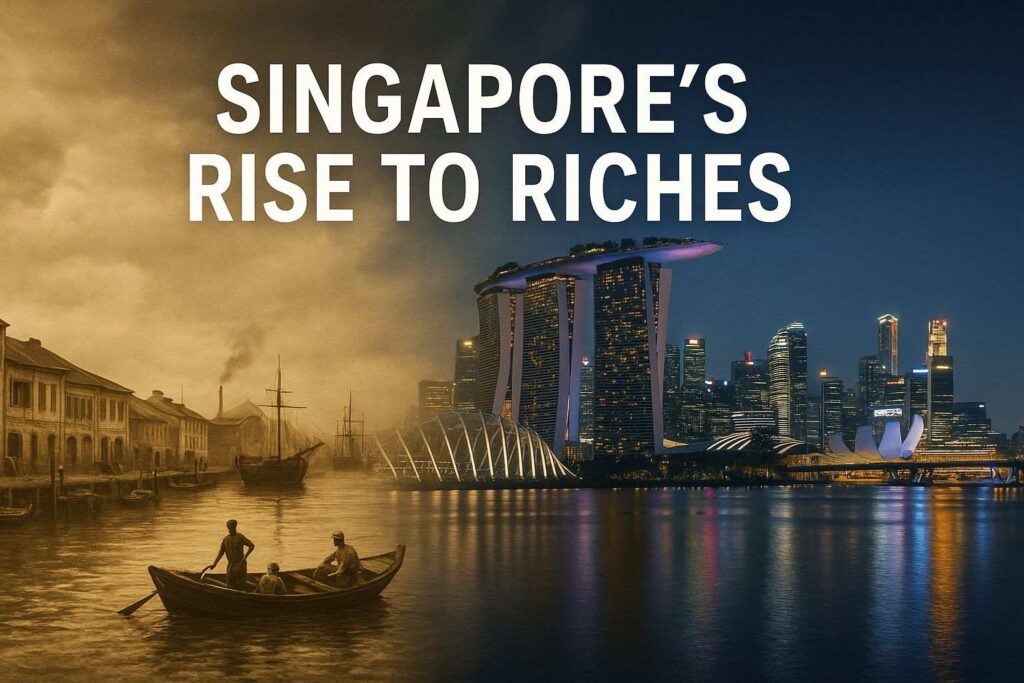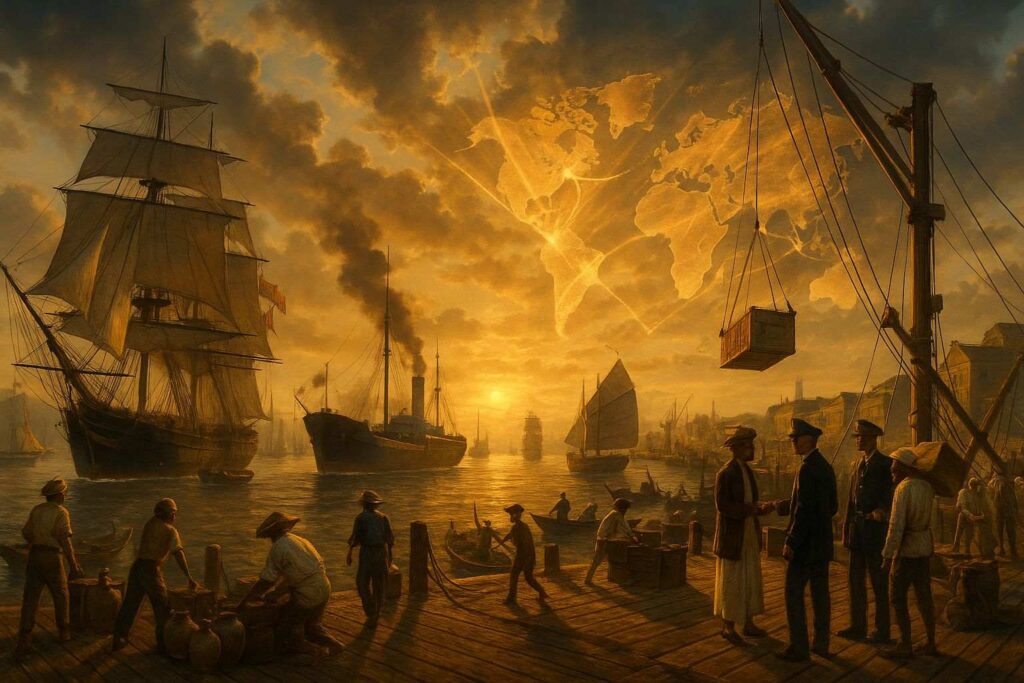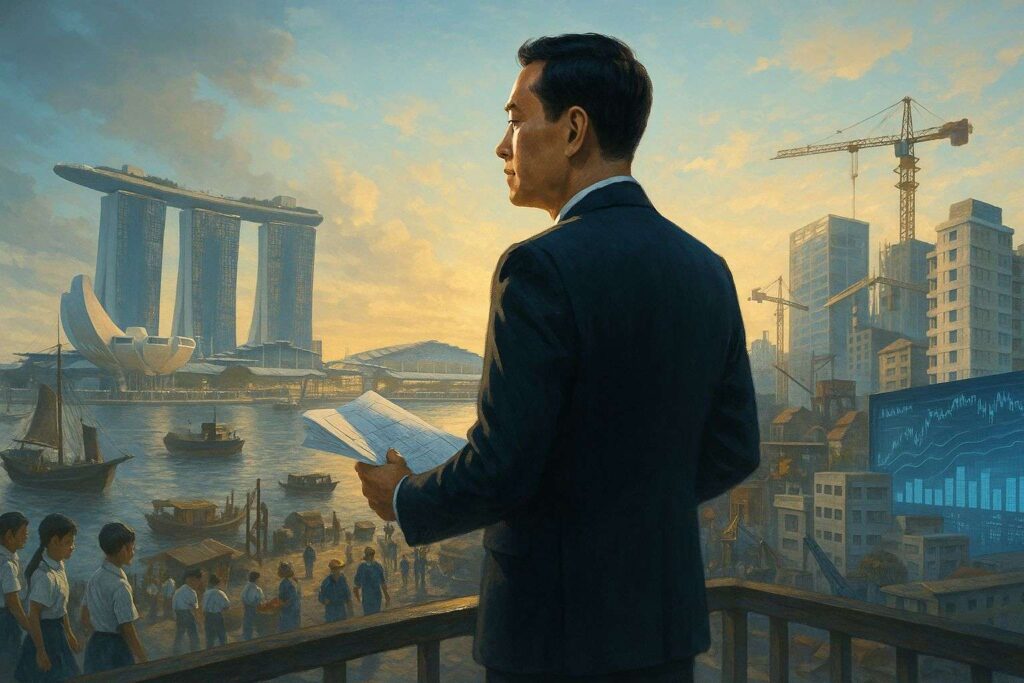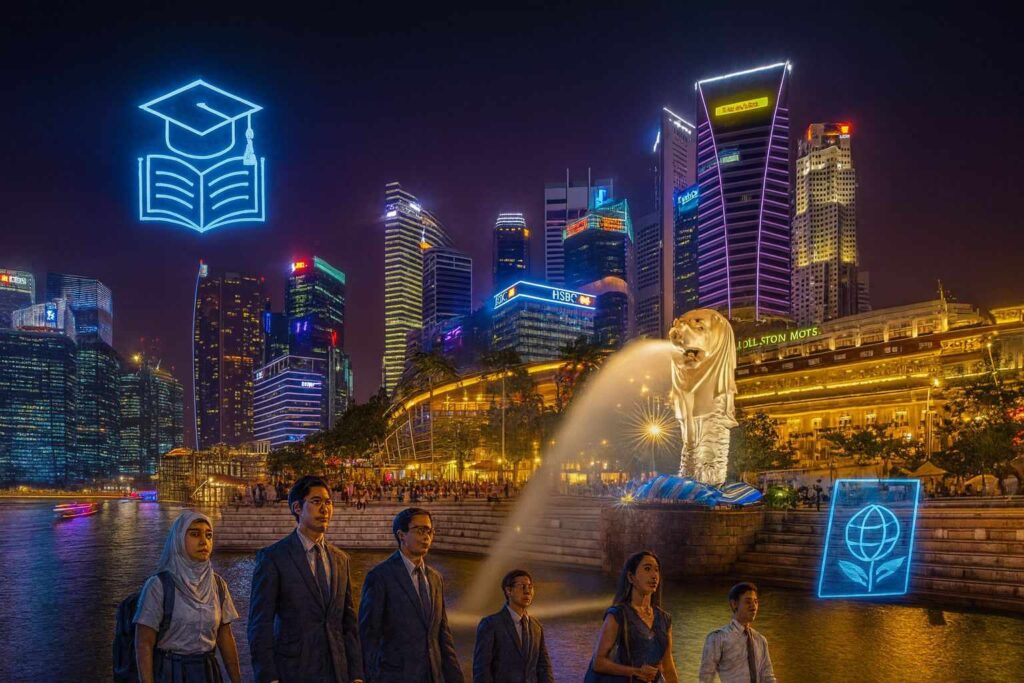Why Is There So Much Wealth in Singapore? Inside the Rise of Asia’s Richest City-State

Imagine a tiny, resource-barren island, so small it’s barely a speck on the world map. A place with no natural resources, a population density that’s off the charts, and a history marred by poverty, crime, and social unrest. This was Singapore just a few decades ago. Today, it stands as one of the wealthiest and most developed nations on the planet. How did this incredible transformation happen? This is the story of how a small city-state defied all odds to become a global economic powerhouse.
A Crossroads of Commerce: The Strategic Significance of Singapore
Singapore’s geographical position has always been its most defining characteristic. Situated at the nexus of the Malacca and Sunda Straits, it served as a vital maritime crossroads connecting the Indian Ocean and the South China Sea. Even in the 7th century, these narrow waterways were crucial for trade between East and West Asia. Control over these straits meant immense economic power, a fact recognized by various empires throughout history.
Early on, local rulers like Dapunta Sri Jayanasa of Palembang and Sumatra exerted control over these routes, levying taxes on passing ships. The island itself, then known as Temasek, gained its modern name, Singapura (Lion City), after a prince encountered an animal believed to be a lion. This name, and the lion’s head as a national symbol, endure to this day.

The strategic importance of the Malacca Strait continued to attract foreign powers. In the early 16th century, the Portuguese established control, building seaports that offered vital stopping points for long-distance voyages, facilitating repairs and fostering trade. However, their dominance was short-lived. By 1603, the Dutch, with their superior naval power, ousted the Portuguese and took command of the strait.
Meanwhile, another formidable force, the British East India Company, was expanding its influence in Asia. While they initially avoided direct confrontation with the Dutch over the Malacca Strait, they sought their own strategic foothold. In 1819, a British officer, Thomas Stamford, shrewdly negotiated a treaty with the Sultan of Johor, acquiring Singapore. This acquisition marked a pivotal moment, as the British recognized the immense potential of Singapore’s natural harbor and its prime location for trade, setting the stage for a fierce commercial rivalry with the Dutch.
The Free Port Advantage and Early Challenges
With both the Dutch and British vying for maritime supremacy, a fierce competition ensued. The British East India Company, now in possession of Singapore, began developing its port infrastructure to rival the Dutch-controlled Malacca Strait. To gain an insurmountable advantage, the British declared Singapore a free port, meaning zero taxes on business activities. This bold move attracted ships from all over the world, even at the cost of immediate tax revenue.
The long-term strategy was to boost overall trade in Singapore, ultimately leading to greater profits. Singapore’s natural coastal slope, ideal for docking ships, further cemented its appeal, making it a preferred choice for traders. This influx of trade led to a significant migration of people from neighboring regions, transforming Singapore from a sparsely populated island into a bustling hub. However, this rapid growth came with severe challenges.
The British, primarily focused on the port’s security and profitability, neglected proper administration for the burgeoning population. This oversight led to a surge in illegal activities, turning Singapore into a notorious haven for crime, including opium dens, gambling, slave trading, and widespread violence. The working population, largely a labor class exploited for cheap labor, found little support or entertainment, leading to widespread opium addiction and social decay. By 1847, the population had swelled to 70,000, with a significant portion addicted to opium, exacerbating poverty and social unrest.
A Turning Point: The Suez Canal and Shifting Fortunes
A crucial turning point arrived in November 1869 with the opening of the Suez Canal. This new, shorter route drastically reduced travel time between Europe and Asia, making the Malacca Strait and, by extension, Singapore, even more strategically vital. The increased trade volume led to a booming economy in Singapore, driving up demand for manpower. People from surrounding countries flocked to the island for work, further increasing its population.

This demographic shift compelled the British to finally establish proper administration, recruiting police and soldiers, and investing in infrastructure to meet the needs of the growing workforce. Singapore began to evolve from a mere trading post into a more structured British colony. However, this period of growth was interrupted by global crises. The outbreak of World War I in 1914, though not directly involving Singapore, significantly impacted global trade, causing economic hardship and unemployment on the island. The Spanish Flu pandemic in 1918 further devastated the population, claiming thousands of lives.
The Great Depression of 1929 and the subsequent outbreak of World War II in 1939 plunged Singapore into deeper turmoil. During World War II, Japan launched a brutal attack on Singapore in February 1942, swiftly defeating the British forces and subjecting the local population to immense suffering, including mass killings and forced labor. At this point, it was unimaginable that Singapore would ever emerge as a prosperous nation.
The Dawn of a New Era: Self-Governance and Visionary Leadership
After Japan’s surrender in August 1945, British forces re-entered Singapore. Recognizing the need for stability and efficient port operations, they initiated administrative reforms, granting Singapore self-governance. This marked a significant shift, allowing the local population to manage domestic affairs, including forming their own government and electing leaders. International relations and security, however, remained under British purview.
In 1959, Singapore held its first general election. A pivotal figure emerged: Lee Kuan Yew, who, leading the People’s Action Party, secured a landslide victory, winning 43 out of 51 seats and becoming the nation’s first Prime Minister. His leadership would prove to be the single most transformative factor in Singapore’s destiny. While the British had focused primarily on the port’s commercial gains, Lee Kuan Yew envisioned a complete overhaul of Singapore’s national, economic, and social fabric. His unique and far-sighted approach earned him the title of the nation’s founding father.
Lee Kuan Yew understood the precarious position Singapore was in. Without self-reliance, the newly self-governing entity faced an uncertain future. The dominant Chinese population raised concerns about external communist influences, while internal challenges were monumental. Singapore was plagued by extreme poverty, widespread slums, famine, rampant opium addiction, high crime rates, and deep-seated racial unrest. Unemployment was rampant, and frequent worker strikes further destabilized the fragile economy.

The population was fragmented, with individuals identifying more with their ethnic communities than with a unified national identity. This was the daunting landscape Lee Kuan Yew inherited, a situation that seemed almost insurmountable to outsiders.
The Architect of Modern Singapore: Lee Kuan Yew’s Transformative Vision
Lee Kuan Yew’s leadership was characterized by pragmatic and often unconventional policies designed to overcome Singapore’s inherent disadvantages and forge a cohesive, prosperous nation. He recognized that Singapore’s lack of natural resources and small size necessitated a focus on human capital and strategic economic development. His key strategies included:
Building a Cohesive Society
One of Lee Kuan Yew’s immediate challenges was the deep-seated racial and communal divisions. He implemented policies to foster a shared national identity, emphasizing meritocracy and multiculturalism. English was promoted as a common language to bridge ethnic divides, and public housing initiatives were designed to integrate different communities, breaking down the communal enclaves that had previously defined Singaporean society. This deliberate social engineering aimed to create a sense of belonging and unity among a diverse population.
Economic Diversification and Foreign Investment
Recognizing the limitations of relying solely on entrepôt trade, Lee Kuan Yew embarked on an ambitious industrialization program. He actively courted foreign multinational corporations (MNCs) with attractive incentives, a stable political environment, and a highly skilled workforce. This strategy was crucial for job creation and technology transfer.
Singapore diversified its economy from traditional trade to manufacturing, then to high- tech industries, finance, and services. The government played a proactive role in guiding economic development, establishing statutory boards like the Economic Development Board (EDB) to attract and facilitate investments.
Investing in Education and Infrastructure
Lee Kuan Yew understood that a skilled workforce was paramount for attracting and retaining foreign investment. Significant resources were poured into education, focusing on technical and vocational training to meet the demands of emerging industries. The education system was designed to be rigorous and meritocratic, producing a highly competent and adaptable labor force. Concurrently, massive investments were made in world-class infrastructure, including Changi Airport, a modern port, and efficient transportation networks, further enhancing Singapore’s attractiveness as a global business hub.

Combating Corruption and Ensuring Good Governance
A cornerstone of Lee Kuan Yew’s vision was the establishment of a clean and efficient government. He implemented strict anti-corruption laws and ensured their rigorous enforcement, creating a transparent and predictable business environment. This commitment to good governance was a major draw for foreign investors, who valued stability and the rule of law. The civil service was professionalized and well-compensated, attracting top talent and fostering a culture of integrity.
Pragmatic Foreign Policy
Despite its small size, Singapore adopted a pragmatic and active foreign policy, maintaining good relations with major powers and participating in international organizations. This ensured its security and facilitated its economic integration into the global economy. Lee Kuan Yew skillfully navigated the complexities of Cold War politics, positioning Singapore as a neutral and reliable partner for trade and investment.
These comprehensive and often audacious strategies, combined with a disciplined and long-term approach, transformed Singapore from a struggling post-colonial outpost into a beacon of economic prosperity and social harmony. The challenges were immense, but the unwavering commitment to a clear vision laid the foundation for the modern, affluent nation it is today.

A Model for Development: Singapore’s Enduring Legacy
Singapore’s journey from a vulnerable, impoverished island to a thriving global metropolis is a testament to visionary leadership, strategic planning, and the resilience of its people. It demonstrates that even without natural resources, a nation can achieve extraordinary prosperity through sound governance, investment in human capital, and a relentless pursuit of economic diversification.
The principles applied in Singapore ‒ a strong emphasis on education, a welcoming environment for foreign investment, a commitment to eradicating corruption, and the fostering of a cohesive national identity ‒ offer valuable lessons for developing nations worldwide. Today, Singapore continues to innovate, adapting to global changes and maintaining its competitive edge. Its story is a powerful reminder that with determination and a clear vision, even the most challenging circumstances can be overcome, paving the way for remarkable success.


